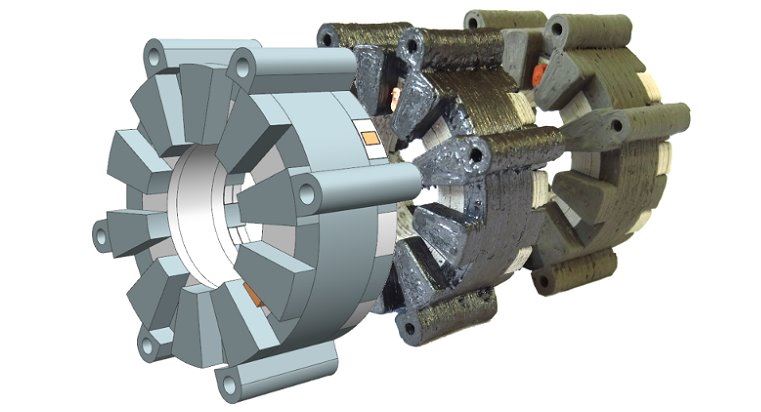The electric motor was first fully printed on a 3D printer
German engineers have demonstrated the world’s first electric engine, 100% made with a 3D printer.
According to the developers, the ceramic materials used in the 3D printing process will significantly expand the range of working temperatures.
Researchers of The Hemnitsky Technical University are engaged in the project to create the first fully 3D-printed electric motors. In their experiments, the team uses an accessible method of extrusion 3D printing, called “robocasting” or “Direct Ink Writing” – the construction of layers with viscous materials. Various pastes consisting of binders and fillers made of ceramics, iron and copper were used as consumables. After printing, the engine elements were roasted. The Bavarian company ViscoTec, which manufactures pumping and dosing systems and produces specialized extruders to work with viscous materials, helped to debug the additive process.

The project is the beginning of a study aimed at increasing the operating temperatures of electromechanical devices. Last year, for example, team members Johannes Rudolf and Fabian Lorenz demonstrated 3D-printed induction coils with a maximum operating temperature above 300 degrees Celsius. Typically, temperature limits are derived from the characteristics of the insulation used. To solve this problem, German engineers decided to replace polymer insulation with ceramic materials.
“Over the past two and a half years, we have been working to increase the range of working temperatures of electric cars. Through the use of ceramic insulation, it is possible to significantly exceed the threshold of 220 degrees Celsius, typical of traditional insulators. Maximum working temperatures of electric vehicles in this case will be determined by the ferromagnetic properties
of iron components with a practical limit of around 700 degrees Celsius,” explains Johannes Rudolph. As Lorenz explains, while the specifics of the additive process lead to a decrease in the electrical conductivity of copper components, the consequent loss of efficiency due to increasing resistance is offset by a decrease in winding tempera
ture.Source ecotechnica.com.ua